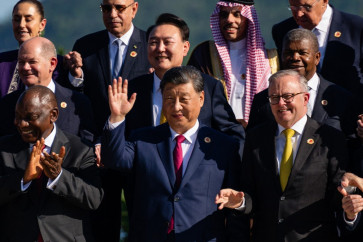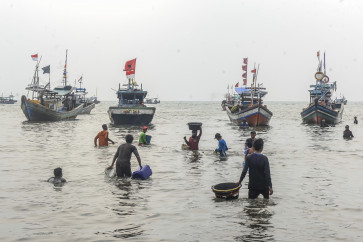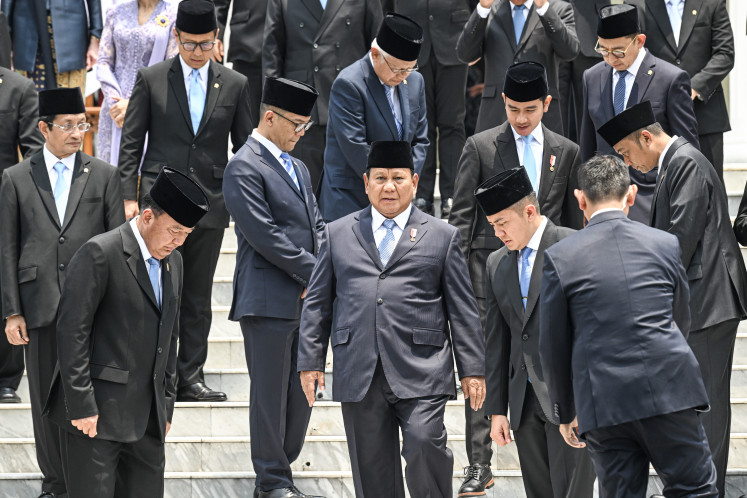Popular Reads
Top Results
Can't find what you're looking for?
View all search resultsPopular Reads
Top Results
Can't find what you're looking for?
View all search resultsNur Alem Sphere to rival Eiffel Tower
Constructed to be 80 meters in diameter with a height of 100 meters, the futuristic look of the architectural symbol of Expo 2017 Astana is the central element of the prestigious exhibition
Change text size
Gift Premium Articles
to Anyone
C
onstructed to be 80 meters in diameter with a height of 100 meters, the futuristic look of the architectural symbol of Expo 2017 Astana is the central element of the prestigious exhibition. The locals call it Nur Alem.
Nur Alem is one of numerous sphere-shaped buildings in the world and, like most of them, its exterior is covered with glass.
The building now houses the Kazakhstan pavilion, which features a campaign for the use of renewable energy. Consisting of eight stories, the first floor is used to acquaint visitors with the history, culture, traditions, places of interest and also the recent achievements of Kazakhstan.
The second through eighth floors are for the Museum of the Future, where the basic types of energy are demonstrated: those of space, the sun, biomass, wind, water and kinetics.
After the exhibition concludes in early September, the building will become a hub of innovation, an important research and cultural center.
The Astana International Finance Centre (AIFC) and the United Nation’s International Green Economy Center will have their offices inside the building.
“The building’s unique installations will certainly render the sphere into becoming another popular world attraction in the future, comparable with the Eiffel Tower in Paris and the Atomium in Brussels,” Akhmetzhan Yessimov, head of Expo 2017 Astana National Company, said.
President Nursultan Nazarbayev even pointed out to the visiting world leaders that one object of their admiration would be the Nur Alem.
Nur Alem will be added to the list of Astana’s iconic tourist spots, along with the famous Bayterek Tower, an emblematic monument and vantage point popular with both foreign and local visitors.
Yessimov said that after the exhibition the sphere would remain as part of the expo’s heritage and would continue to serve the as Astana Museum of the Future with installations made by Italian, French, Spanish and Swiss artists.
Integration of renewable energy elements into the sphere’s design has allowed the conversion of sunlight into electricity to power the building. Two wind generators were also installed on the upper part of the sphere.










